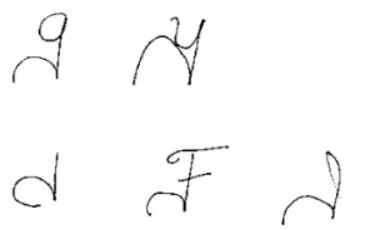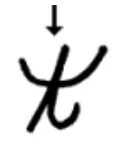Can your handwriting reveal emotional trauma? According to graphology—the study of handwriting—it can. One particularly fascinating and lesser-known aspect is directional pressure, a concept that uncovers how past and present psychological pressures subtly alter the strokes in your writing.
In this article, we’ll explore how directional pressure manifests in handwriting, what it reveals about trauma and emotional resilience, and why it matters in understanding human behavior.
What is Directional Pressure in Handwriting?
Unlike the traditional idea of writing pressure (how hard a person presses the pen on the paper), directional pressure is invisible. It refers to an internal psychological force that bends normally straight downstrokes in the writing, pulling them in one of four directions: left, right, upward, or downward.
This pressure doesn’t create soft curves—it creates caved-in strokes, indicating internal emotional strain. The concept was notably developed by Felix Klein, a handwriting analyst who observed behavioral patterns among inmates in concentration camps during WWII.
The Origins: Felix Klein and Emotional Resilience
Klein’s discovery emerged from his observations at Dachau and Buchenwald. He found that survivors—those with greater psychological flexibility—displayed a specific curve in their downstrokes, particularly curving toward the left. He connected this to Pulver’s theory that the right side of the page symbolizes the future.
Klein concluded: when people face overwhelming fear about the future, their handwriting curves are left. It’s a physical manifestation of emotional trauma and survival stress.
What Different Directions Reveal About Emotional Trauma
1. Directional Pressure from the Right

- Emotional Significance: Fear of the future, anxiety about father figures or authority, and social stress.
- Behavioral Signs: Avoidance, procrastination, commitment phobia, or trying to outsmart others—not out of malice, but as a survival mechanism.
- Long-Term Impact: These writers often carry a sense of hopelessness and fatigue from living with unresolved fears.
2. Directional Pressure from the Left

- Emotional Significance: Unresolved trauma from the past, often maternal influence or childhood events.
- Behavioral Signs: Subtle avoidance, difficulty moving on, and deep-seated vulnerability.
- Long-Term Impact: The past continues to influence the person’s future decisions, often triggering disproportionate responses to minor setbacks.
3. Directional Pressure from Above
- Emotional Significance: Intellectual or moral pressure, often from people perceived as more intelligent or superior.
- Signs in Writing: Shallow t-bars (where the cross on the letter “t” is weak or high) suggest emotional fatigue and avoidance of responsibility.
- Behavioral Traits: Irresponsibility, shallow commitment, or a tendency to give up easily on long-term goals.
4. Directional Pressure from Below (The Felon’s Claw)

- Emotional Significance: Guilt, shame, financial stress, or suppressed instincts.
- The Felon’s Claw: A dramatic curve rising from the lower zone of the writing, often seen in convicted felons or individuals with strong self-sabotaging tendencies.
- Behavioral Traits: Manipulation, provocation, and self-undermining behavior. These individuals may feel undeserving of success and unconsciously create situations to fail.
Why Directional Pressure Matters in Graphology Today
Graphology remains a controversial field, but its insights are being increasingly valued in psychological profiling, human resource assessment, and forensic studies. Directional pressure, specifically, offers a nuanced look at how emotional trauma manifests physically.
It shows us that the past isn’t just with us emotionally—it literally shapes our movements, our writing, and our behavior. From anxiety about the future to guilt rooted in childhood, directional pressure helps connect the dots between the subconscious and the pen.
Final Thoughts
Directional pressure in handwriting is more than an abstract theory—it’s a window into emotional survival. Whether you’re a graphologist, psychologist, or simply someone fascinated by human behavior, paying attention to the direction of strokes in handwriting can reveal hidden fears, unresolved trauma, and inner resilience.
Your handwriting might just be telling a story your voice never did.
Handwriting analysis has helped to understand one another in a relationship and make the relationship last. For a better relationship, try to learn handwriting analysis at KAROHS International School of Handwriting Analysis. Visit our website https://karohs.school/product/the-inner-circle-papers/ to see our product and follow our instagram @karohs.school for more information about handwriting analysis.


